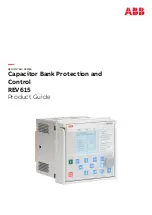
Janu
ary 201
9
190 Legrand PDU User Guide
For security purposes, users attempting to log in to the Legrand PDU must be authenticated. The Legrand
PDU supports the following authentication mechanisms:
Local user database on the Legrand PDU
Lightweight Directory Access Protocol (LDAP)
Remote Access Dial-In User Service (Radius) protocol
By default, the Legrand PDU is configured for local authentication. If you stay with this method, you only
need to create user accounts. See
Creating Users
(on page 146).
If you prefer external authentication, you must provide the Legrand PDU with information about the external
Authentication and Authorization (AA) server.
If both local and external authentication is needed, create user accounts on the Legrand PDU in addition to
providing the external AA server data.
When configured for external authentication, all Legrand PDU users must have an account on the external
AA server. Local-authentication-only users will have no access to the Legrand PDU except for the admin,
who always can access the Legrand PDU.
If the external authentication fails, an "Authentication failed" message is displayed. Details regarding the
authentication failure are available in the event log. See
Viewing or Clearing the Local Event Log
(on page
259).
Note that only users who have both the "Change Authentication Settings" and "Change Security Settings"
permissions can configure or modify the authentication settings.
To enable external authentication:
1. Collect external AA server information. See
Gathering LDAP/Radius Information
(on page 189).
2. Enter required data for external AA server(s) on the Legrand PDU. See
Adding LDAP/LDAPS Servers
(on page 190) or
Adding Radius Servers
(on page 192).
For illustrations, see
LDAP Configuration Illustration
(on page 467) or
Radius Configuration
Illustration
(on page 478).
3. If both the external and local authentication is needed, or you have to return to the local authentication
only, see
Managing External Authentication Settings
(on page 193).
Special note about the AES cipher:
The Legrand PDU device's SSL/TLS-based protocols, including LDAPS, support AES 128- and 256-bit
ciphers. The exact cipher to use is negotiated between Legrand PDU and the client (such as a web browser),
which is impacted by the cipher priority of Legrand PDU and the client's cipher availability/settings.
Tip: To force Legrand PDU to use a specific AES cipher, refer to your client's user documentation for
information on configuring AES settings.
Gathering LDAP/Radius Information
It requires knowledge of your AA server settings to configure the Legrand PDU for external authentication. If
you are not familiar with these settings, consult your AA server administrator for help.
Information needed for LDAP authentication:
The IP address or hostname of the LDAP server
Whether the Secure LDAP protocol (LDAP over TLS) is being used
If Secure LDAP is in use, consult your LDAP administrator for the CA certificate file.
The network port used by the LDAP server
The type of the LDAP server, usually one of the following options:
OpenLDAP
If using an OpenLDAP server, consult the LDAP administrator for the Bind Distinguished Name
(DN) and password.
Microsoft Active Directory
®
(AD)















































